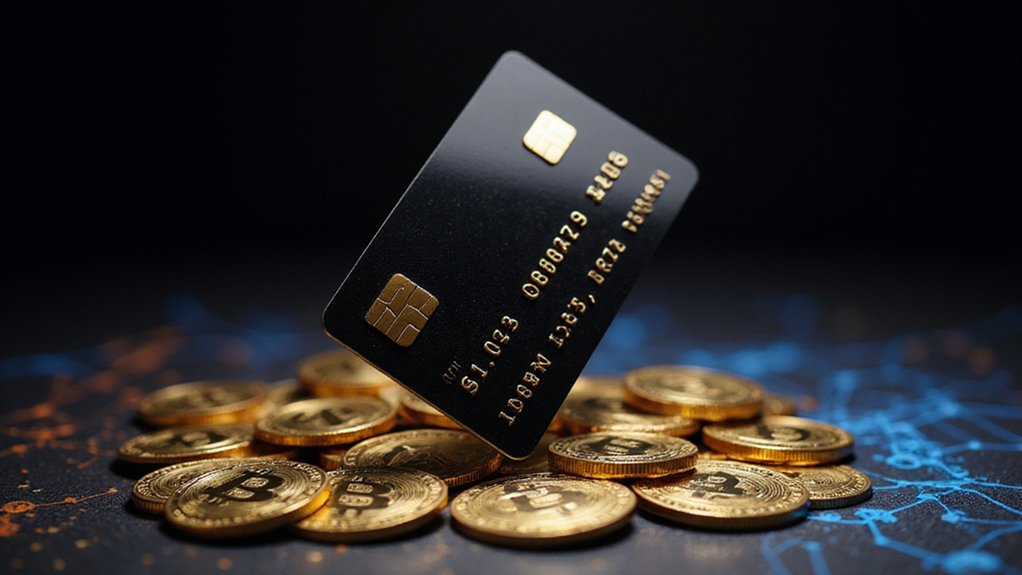While traditional credit card rewards have long confined consumers to the mundane trinity of cash back, airline miles, and hotel points, the cryptocurrency revolution has spawned an entirely new species of plastic that transforms everyday purchases into digital asset accumulation.
These crypto credit cards operate on familiar payment networks like Visa and Mastercard, yet their reward mechanisms represent a fundamental departure from conventional cashback schemes—offering Bitcoin, Ethereum, and dozens of alternative cryptocurrencies as compensation for routine spending.
Familiar payment rails, revolutionary rewards—turning grocery runs into Bitcoin accumulation through the alchemy of everyday spending.
The market leaders demonstrate varying approaches to this digital alchemy. Gemini’s credit card delivers up to 3% back in cryptocurrency on dining purchases (subject to monthly caps, naturally), while depositing rewards instantly into users’ exchange accounts—a feature that eliminates the typical friction between earning and accessing crypto assets.
Venmo takes a more conservative approach, allowing optional auto-conversion of traditional cash back into Bitcoin or Ethereum without transaction fees, fundamentally letting consumers test the crypto waters without diving headfirst into digital-first rewards.
More ambitious offerings like the Nexo Card introduce tiered loyalty structures where cashback percentages fluctuate based on account balances and token holdings—because apparently, even cryptocurrency rewards must bow to the ancient banking principle that having money helps you make more money.
The card offers between 0.1% and 2% back depending on whether users choose Bitcoin or the platform’s proprietary NEXO tokens, creating an interesting dynamic where reward optimization requires strategic thinking about token ecosystems.
Perhaps most remarkably, these cards generally absorb crypto conversion costs rather than passing them to consumers—a rare instance of financial institutions eating their own fees. However, users should be aware that when their earned cryptocurrency appreciates and is later sold or used, capital gains tax may apply to the increase in value, adding a layer of complexity to what might seem like straightforward rewards.
This cost structure enables gradual cryptocurrency accumulation through everyday spending without the typical exchange fees that plague direct crypto purchases. The market’s explosive growth, with the crypto credit card sector expanding at an 18.8% CAGR and increasing from $1.53 billion to $1.82 billion in just one year, demonstrates the accelerating consumer appetite for digital asset integration in traditional financial products.
The global reach of these cards mirrors traditional credit products, operating across regulated markets while supporting both physical transactions and digital wallet integration. Many savvy users secure their accumulated crypto rewards in non-custodial wallets like Trust Wallet, which provides full control over private keys and supports hundreds of tokens across multiple blockchains.
Virtual cards seamlessly connect with Apple Pay and Google Pay, suggesting that the future of money might arrive not through revolutionary disruption but through the decidedly mundane act of buying groceries—albeit with Bitcoin rewards accumulating in the background.









